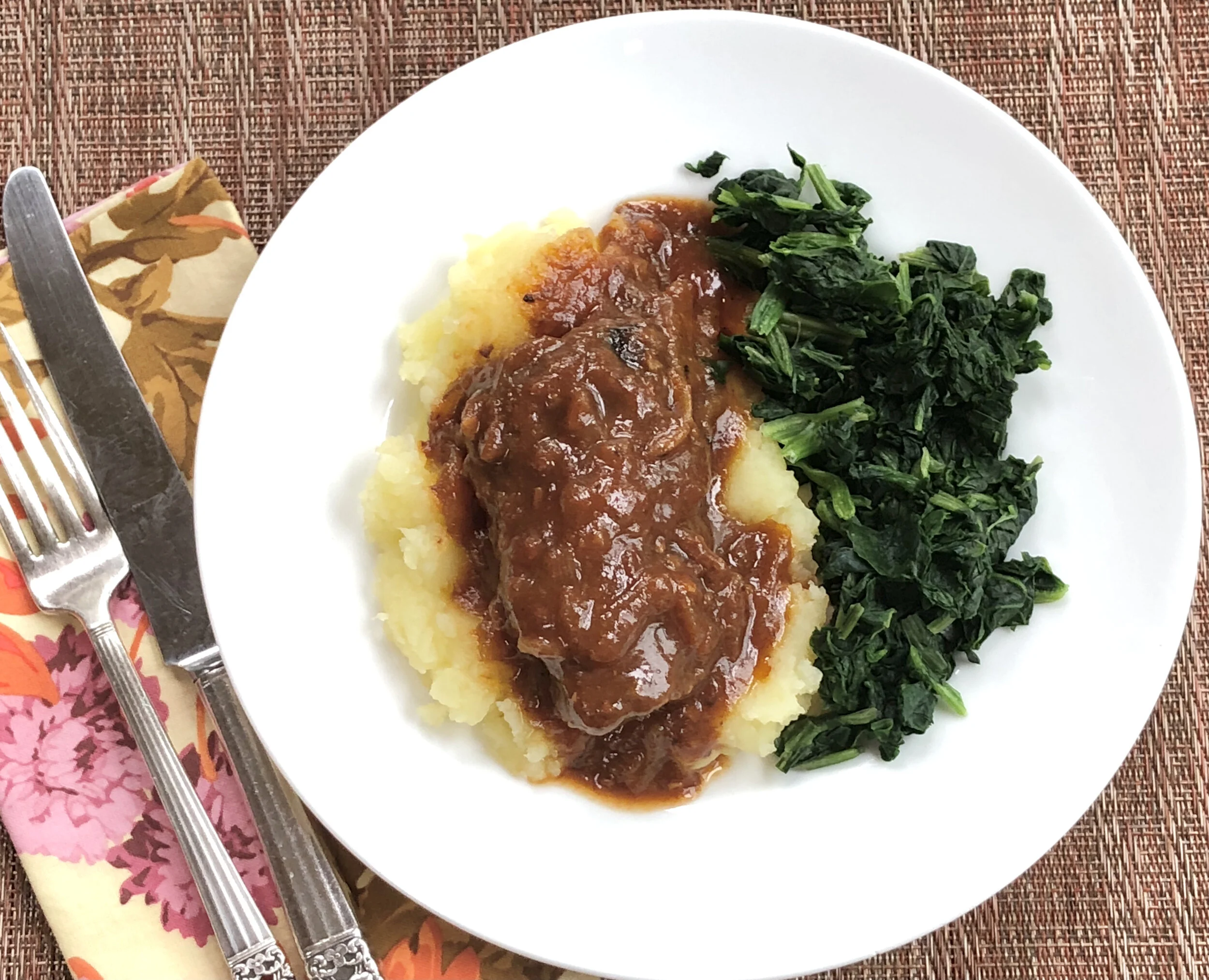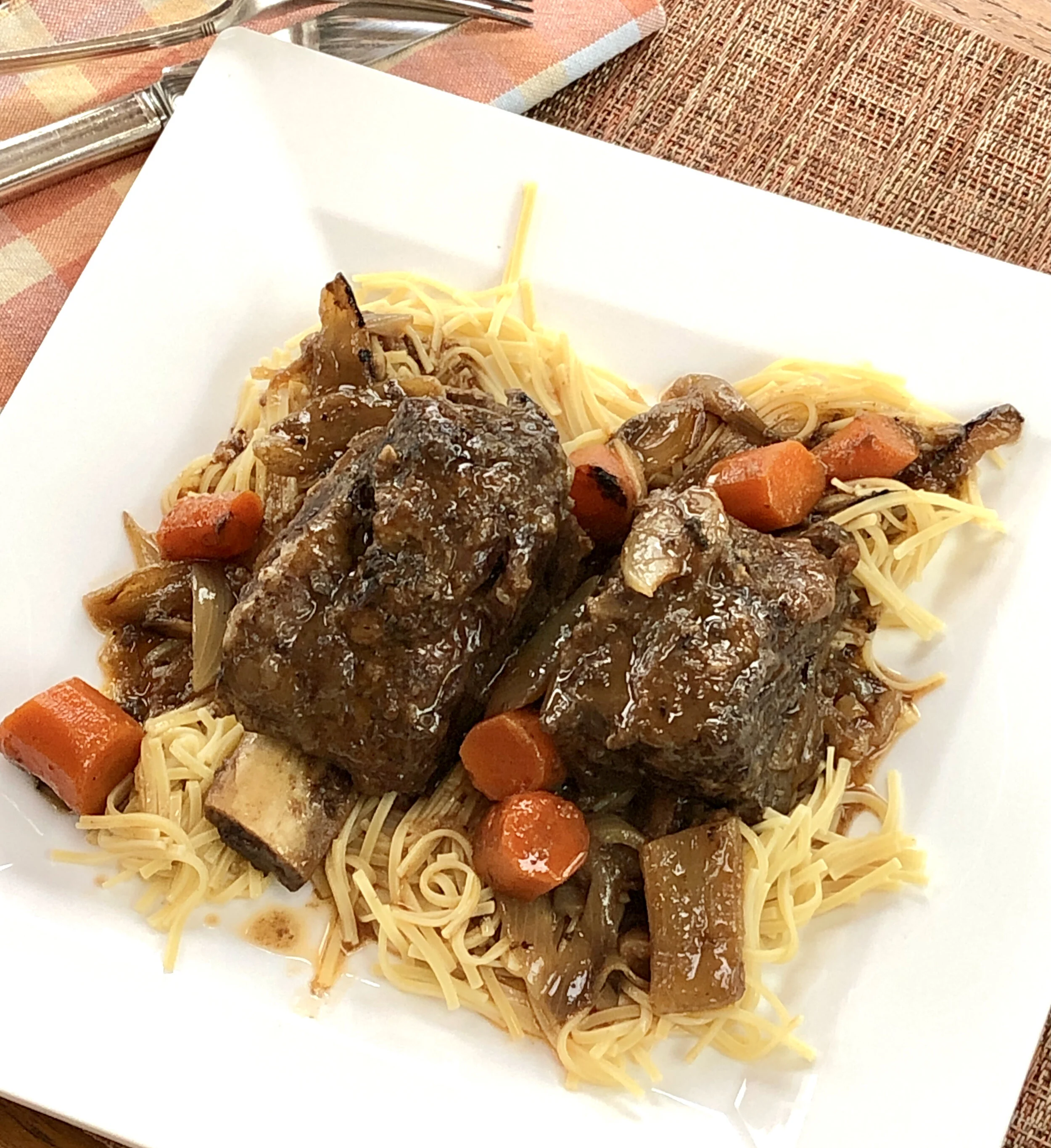When it came to recipes, my mother always said “why change a winner?!” And I agree with her — sometimes. There are some recipes that I never change: my mother’s apple pie, my grandma’s challah, almond chicken nugget hors d’oeuvres and a few others. They’re too good to mess with.
But most of the time I tinker with ingredients, change seasonings, patchke a little. Or a lot.
Most of the time it works out delightfully.
Like the other day, when I went to make short ribs. I thought I had the appropriate wine, but I didn’t. I wasn’t in the mood for beer. Stock — to me it’s just a so-so flavor for short ribs, especially when you want them sweet-and-sour.
I did have a large container of pineapple juice though, so I decided on that!
As it turns out, pineapple juice contributes both sweet AND sour.
The short ribs were perfect.
I had added fresh ginger to the dish to give it a flash of citrusy-heat. The second time I made the recipe I used chili pepper instead of ginger. The dish was equally good.
My husband said both versions, similar in taste (but one slightly spicier) were the best short ribs he ever tasted.
Sweet-Sour Short Ribs
4 pounds boneless short ribs
all-purpose flour
5-6 tablespoons vegetable oil
2 large onions, peeled and sliced
2 large cloves garlic, chopped
1 tablespoon chopped fresh ginger (or one teaspoon chopped fresh chili pepper)
1 cup bottled chili sauce
1 cup pineapple juice
1/4 cup apple cider vinegar
1/4 cup honey
salt and freshly ground black pepper to taste
Coat the meat with a film of flour. Heat 2 tablespoons of vegetable oil in a large pan or Dutch oven and cook the meat for 8-10 minutes, turning the pieces occasionally, or until they are lightly browned. Add 1-2 tablespoons more vegetable oil to the pan as needed to prevent sticking. Remove the meat and set it aside. Add 1-2 tablespoons of the vegetable oil to the pan. Add the onions, garlic and ginger and cook, stirring occasionally, for 5-6 minutes, or until the vegetables have softened slightly. Return the meat to the pan. Pour in the chili sauce, pineapple juice, apple cider vinegar and honey, stir to combine the ingredients, and sprinkle with salt and pepper to taste. Turn the heat to low, cover the pan and cook for 3-1/2 to 4 hours or until the meat is very tender.
Makes 6-8 servings

